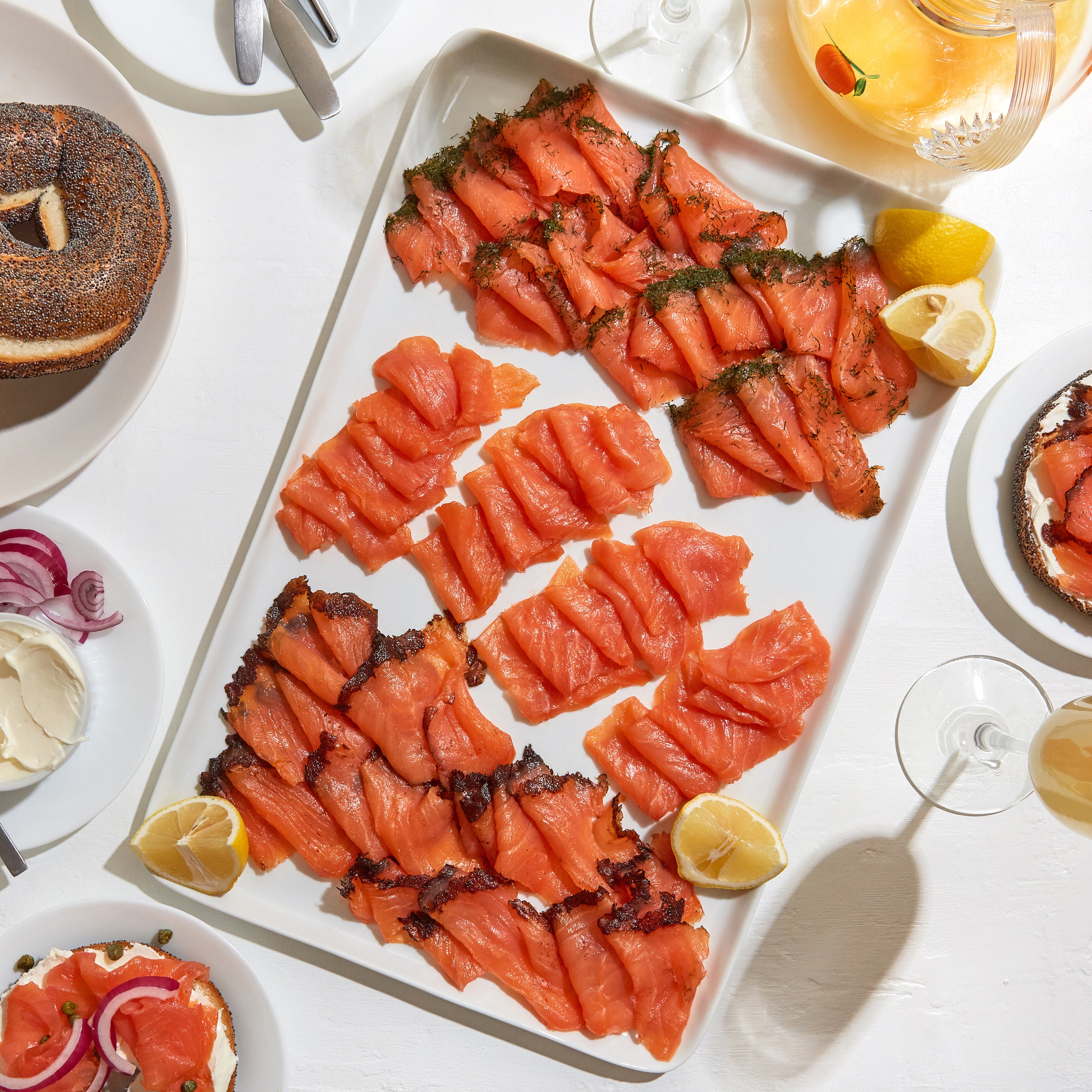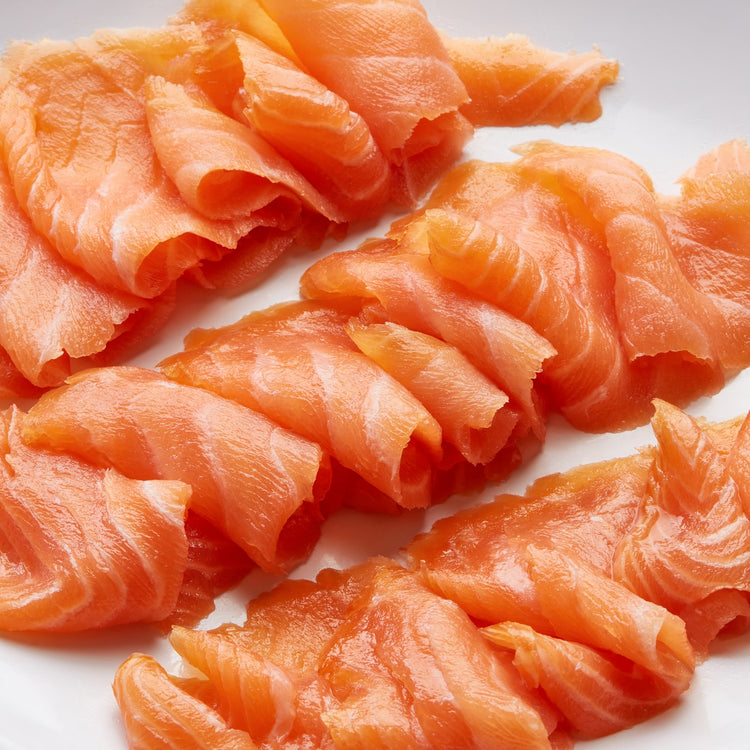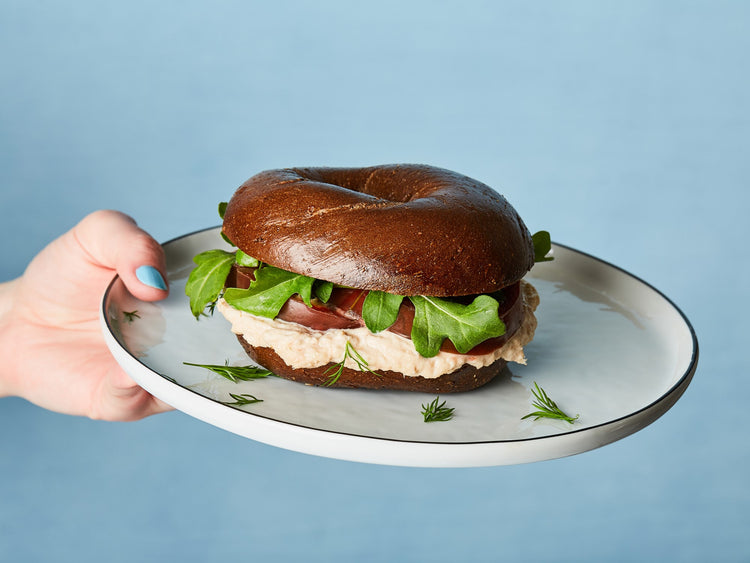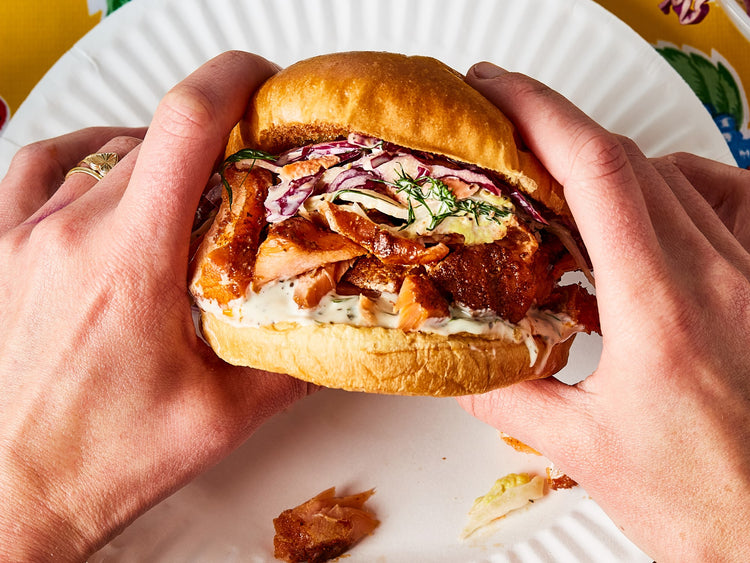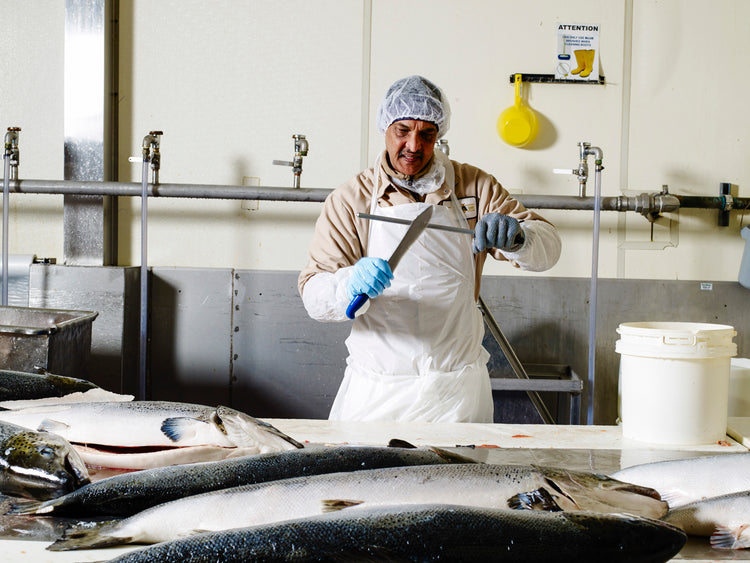Looks aren’t everything. But they’re a good place to start. Before we taste, we look out for the color and hue of the fish. Vibrant, glistening, and on the orange side of pink? That’s likely Atlantic salmon. Wild salmon, on the other hand, can vary in color depending on factors like age and diet. We usually identify it by its tell-tale deep red hue.
Next, we look for fat (fat = flavor), which appears as white striations in the flesh. You’re more likely to notice this “marbling” in ultra-silky Atlantic salmon.
